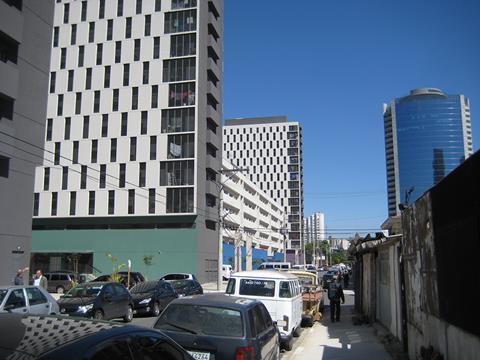This housing scheme in São Paulo demonstrates how sustainable, community-friendly development can be achieved

Three weeks before I went to Brazil, Building Magazine warned us ‘Brazil work fails to live up to UK expectations’; that’s probably true but it doesn’t mean that we shouldn’t be interested.
Last month I was part of a University of Reading construction and property team knowledge exchange project with the University of São Paulo, my role being to discuss the potential of UK design audit methodologies and sustainable development expertise. Arriving early one morning, we groped our way through a foggy industrial dystopia with seven lanes of traffic heading into town; São Paulo has more than 15 million inhabitants and seven million cars, which most use to go to work!
Favela rehabilitations need to spend a lot of effort sorting out the social problems before the building starts
Wrong-footed by recent huge demonstrations calling for investment in public transport rather than World Cup and Olympic stadia, the City of São Paulo opened over 100 kms of bus lane more or less overnight; so now the buses work but most still spend two to three hours commuting short distances by car. The next surprise was finding our hotel was in a new high rise cluster of towers, as the consequence of the right to develop your property, subject only to generous plot ratios and some setback rules. Our not untypical building was 17 floors with sealed windows. These developments are like patches of thistles in a field with little sense of place or respect for the surrounding two or three storey homes, shops and workplaces - OK.
There have been some strong criticisms of the lack of connectivity or community in the flagship ‘My House My Life’ developments - a scheme which will see a million homes built in year one and 1.7m underway for people living in favelas (shanty towns) without kitchens, bathrooms or sewage - but we did see one model scheme sandwiched between the new São Paulo Central Business District and the western inner motorway/monorail corridor.
Three of the four occupied city blocks there have been transformed, one into a community park and two as housing while the fourth will provide more housing.
The new Edith’s Garden Community provides 252 small two-bed apartments in low rise blocks and three 17 storey towers. Such favela rehabilitations need to spend a lot of effort sorting out the social problems (how to get a job, learn how to pay bills and become part of a community) before the building starts. But what makes Edith’s Garden an exemplary sustainable development is that the housing sits on a delightful (7am - 7pm) nursery so the mothers can work, as well as a catering school and a soon-to-open health centre.
And it looks great!


Robin Nicholson is a senior partner of Cullinan Studio



























No comments yet